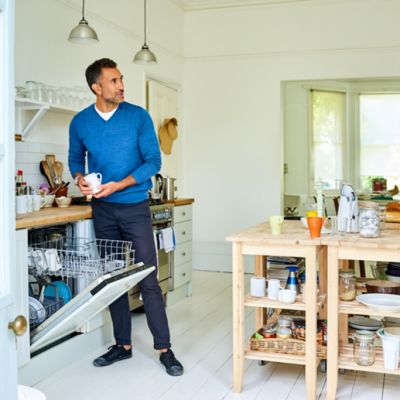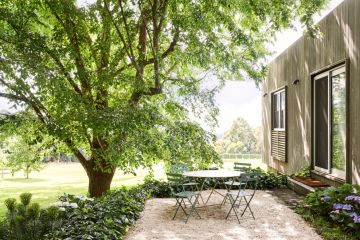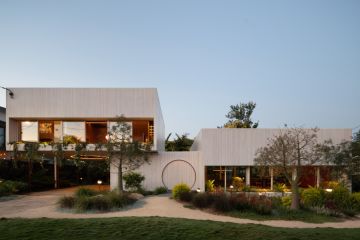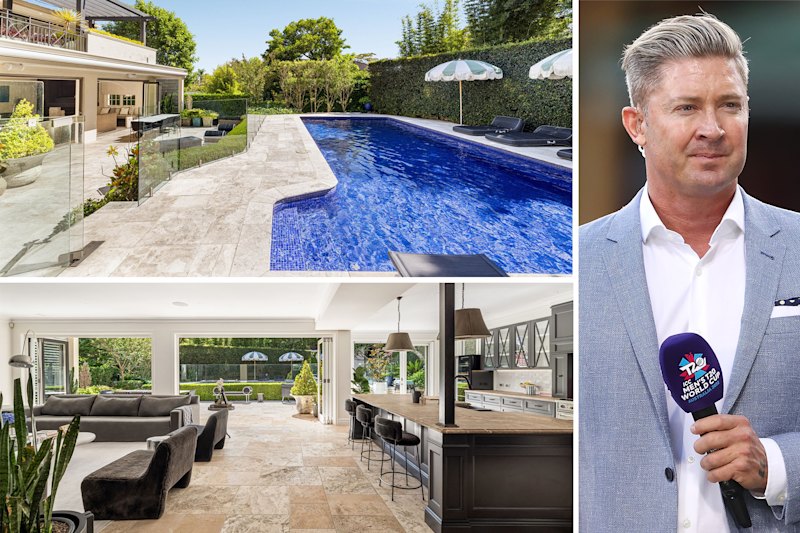From decor disagreements to having kids: How your home affects your relationship

Your home provides obvious clues about your taste, but have you considered what it says about your relationships? It probably offers “tells” about your family situation and who rules the roost.
Sydney couple Gabrielle Martinovich and David Hull, for example, say the pizza oven in their yard and the camper trailer in the driveway reveals they like entertaining and travelling.
It’s the styling, however, that divulges more of their story. The couple, who’ve been together for 12 years and have 50 per cent custody of David’s two teenage children, bought their “typical red double brick” home eight years ago. As consultant Martinovich explains, “We both came together with different lots of furniture and had to decide what to start fresh on.” Engineer Hull says this led to “heated discussions”.
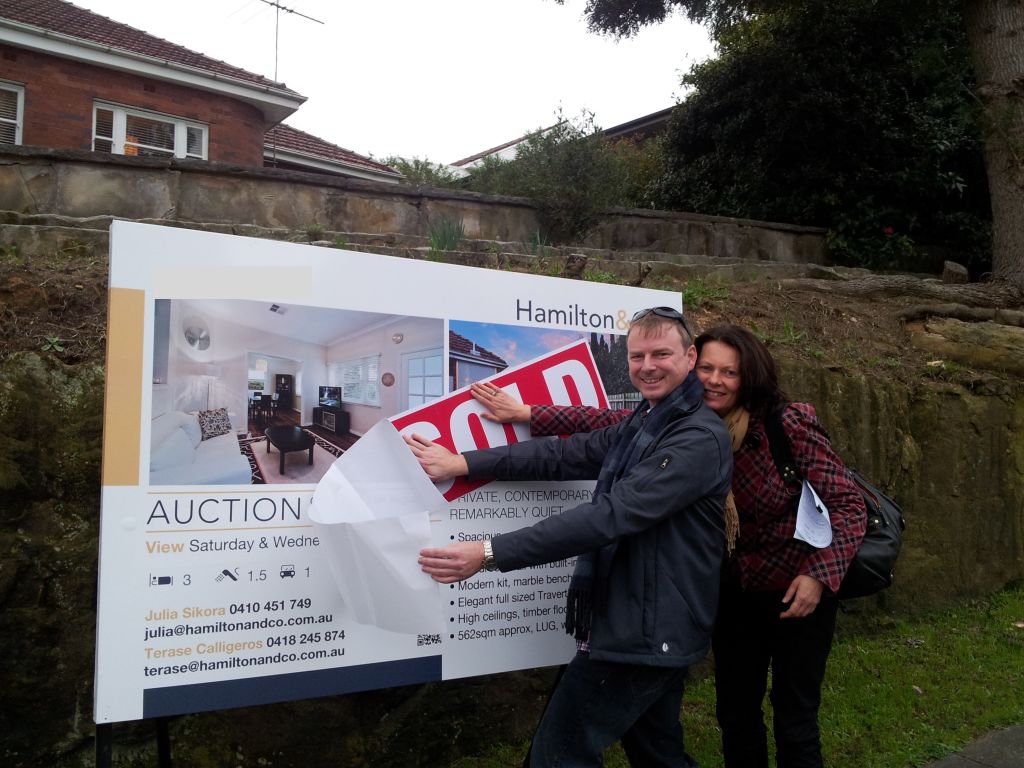
“It was the very first big furniture decision we made together, and we stuffed up.”
It turned out the furniture they chose didn’t suit the home, and tension flared when Martinovich pushed to swap it. “Dave got really upset because we had agreed on it. Ironically, we ended up going with the other option I liked in the shop,” she says.
Coaching psychologist Amelia Twiss says preferences for a specific design aesthetic are an obvious potential relationship issue, especially when people move in together and combine belongings in the same space.

“People who are more sensitive to their physical surroundings may have specific preferences or needs for their personal comfort that can sometimes be difficult for someone less sensitive to this to understand,” she says. “An example of this is the humble lightbulb. The difference between certain lightbulbs can have a big impact on the feeling of warmth in a space. Some people are very sensitive to this, and others won’t notice at all.”
Finances can also cause conflict, she notes. “If one partner owns the property or is paying for renovations or styling, there needs to be clarity around who has the final say.”
She adds that a couple’s home may clearly be more the expression of one partner than the other or a combination of both their tastes. “It can be important for people to feel as though they can express their own style through their space. One way to do this is to ensure each person has an area they can decorate; however, they like without the other person’s input.”
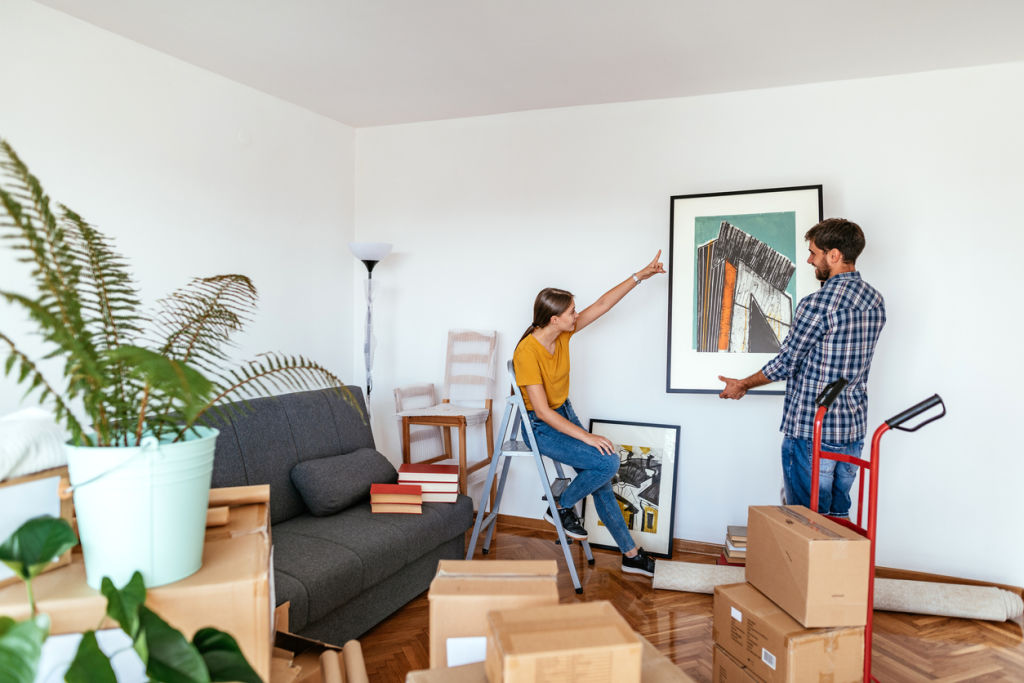
Martinovich says Hull’s tastes have “come over to my side”, which makes decisions easier. “Now, we narrow it down quickly, usually between one or two things. Then it might just be a colour choice.
“Surprisingly, when I needed new furniture for my home office, David picked it, and it was spot on. It matched other things we’ve got and was exactly what I would have picked.”
A couple’s home is also likely to change over time as their relationship evolves, Twiss says. You might see hand-me-downs in a young couple’s home, for example, and better-quality furnishings and a collection of mementoes later on.
The arrival of children also has a big impact, as the home needs to accommodate their sleeping space, play areas, and safety measures such as child-safe gates, Twiss notes. Expanding families sometimes outgrow their homes and need to upsize. Teenagers need more private space. Children often live with their parents for longer and young adults are likely to want to decorate their own areas.

For Hull and Martinovich, the children’s education has influenced how their home is used. They have switched their son into the larger bedroom with a desk for his final year of school and their daughter – who is at university and away from home more often – into the smaller bedroom. COVID-19 also had an impact, as the couple worked from home at desks in the children’s rooms.
Their next major transition is likely to be kids leaving home. Although they’re not expecting this anytime soon, they’re considering converting the larger kids’ bedroom into a guest room and the smaller one into a permanent home office when the time comes.
Twiss says some parents are keen to reclaim spaces in the house previously used by departing children, whereas “Others are happy to keep rooms as they were when young adults were in the house.”
Furthermore, a couple’s needs can shift as life progresses, Twiss points out. “Accessibility becomes more important, and people may downsize or relocate to a home that better suits their needs and ability to maintain a property.”
Whatever the stage of your relationship, creating a home with someone is exciting, Twiss says. “Agree on a concept for how you want your space to feel as that will drive decision making around what to add to your space. Getting clear on a budget is also important, and aligning your budget with your overall concept can help you to make appropriate choices.”
We recommend
We thought you might like
States
Capital Cities
Capital Cities - Rentals
Popular Areas
Allhomes
More
